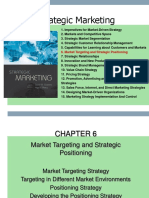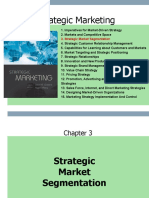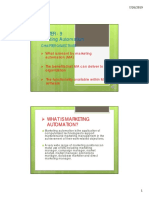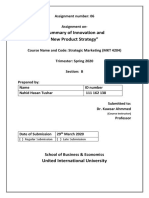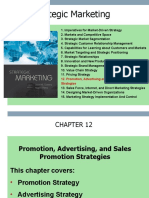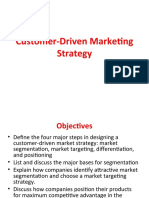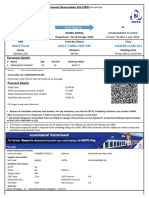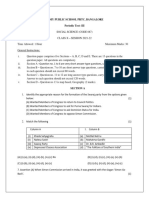0% found this document useful (0 votes)
202 views10 pagesChapter 8: Customer-Driven Marketing Strategy: Creating Value For Target Customers
This document outlines steps for developing a customer-driven marketing strategy:
1) Market segmentation - Dividing the market into subgroups with distinct needs.
2) Market targeting - Evaluating segments and selecting specific targets.
3) Differentiation - Creating superior customer value to distinguish the offering.
4) Positioning - Arranging the offering to occupy a clear, desirable place in customers' minds relative to competitors. The document discusses various bases for segmentation, strategies for targeting segments, and approaches for differentiation and positioning.
Uploaded by
Dai HuuCopyright
© © All Rights Reserved
We take content rights seriously. If you suspect this is your content, claim it here.
Available Formats
Download as DOCX, PDF, TXT or read online on Scribd
0% found this document useful (0 votes)
202 views10 pagesChapter 8: Customer-Driven Marketing Strategy: Creating Value For Target Customers
This document outlines steps for developing a customer-driven marketing strategy:
1) Market segmentation - Dividing the market into subgroups with distinct needs.
2) Market targeting - Evaluating segments and selecting specific targets.
3) Differentiation - Creating superior customer value to distinguish the offering.
4) Positioning - Arranging the offering to occupy a clear, desirable place in customers' minds relative to competitors. The document discusses various bases for segmentation, strategies for targeting segments, and approaches for differentiation and positioning.
Uploaded by
Dai HuuCopyright
© © All Rights Reserved
We take content rights seriously. If you suspect this is your content, claim it here.
Available Formats
Download as DOCX, PDF, TXT or read online on Scribd
/ 10
